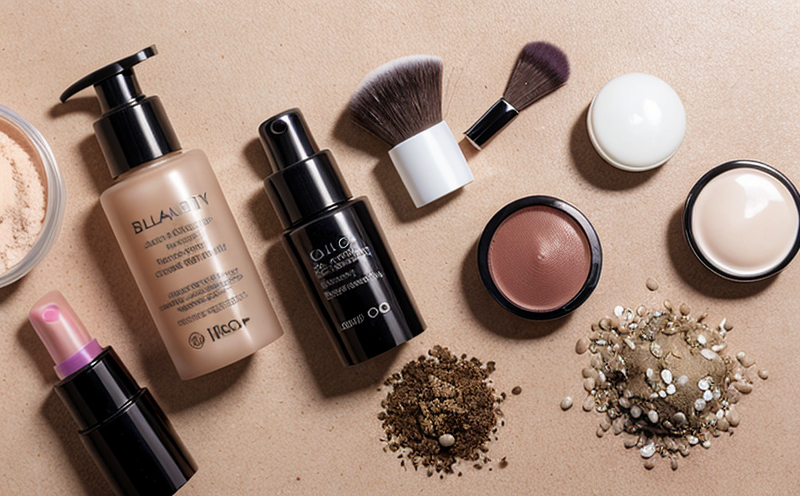Environmental Monitoring of Cosmetic Contaminants
The environmental impact assessment of cosmetic products is a critical aspect of modern quality management and compliance. Cosmetics, as part of personal care items, are increasingly scrutinized for their biodegradability and the potential contaminants they introduce into our ecosystems. This service focuses on the rigorous monitoring and evaluation of these contaminants to ensure that cosmetic products meet stringent environmental standards.
Our laboratory adheres strictly to international standards such as ISO 14024 and ASTM D5399, ensuring a robust framework for testing. The process starts with thorough sample preparation which involves isolating potential contaminants from the cosmetic product under study. This is followed by the use of advanced analytical instrumentation like High Performance Liquid Chromatography (HPLC) and Fourier Transform Infrared Spectroscopy (FTIR), to identify and quantify these contaminants accurately.
The primary goal of this service is not just compliance but also to provide insights that can drive product innovation. By understanding how cosmetic products behave in the environment, we can help our clients make informed decisions about ingredient selection and formulation changes. This proactive approach ensures that cosmetics do not only meet current regulations but are also sustainable and environmentally friendly.
The methodology involves a series of steps: sample collection from various sources including laboratory formulations and field samples, extraction and purification processes, followed by detailed analysis using multi-disciplinary techniques. The results provide comprehensive data on the environmental fate of cosmetic contaminants, their degradation rates, and potential risks they pose to aquatic systems.
This service is particularly valuable for R&D engineers looking to innovate with sustainable ingredients or quality managers aiming to ensure product safety and compliance. Our expertise in this field allows us to offer a holistic view of environmental impacts, which can be leveraged for strategic business decisions.
Why Choose This Test
- Precision: Utilizing state-of-the-art analytical techniques that ensure accurate and reliable contaminant identification and quantification.
- Compliance: Adherence to international standards like ISO 14024 and ASTM D5399, ensuring robust compliance data.
- Innovation: Insights into the environmental behavior of cosmetic contaminants can drive sustainable product development.
- Risk Mitigation: Early identification of potential risks helps in mitigating adverse effects on ecosystems.
- Expertise: Leveraging our team's deep knowledge in both analytical chemistry and environmental science to provide comprehensive support.
International Acceptance and Recognition
The methodologies employed for environmental monitoring of cosmetic contaminants are internationally recognized and widely accepted. Our services align with global standards, ensuring that the data generated is credible and acceptable in diverse regulatory environments.
The use of ISO 14024 and ASTM D5399 guarantees that our testing processes meet stringent requirements set by international bodies. This recognition not only enhances credibility but also facilitates easier integration into compliance frameworks across different jurisdictions. Compliance officers can rely on this service to ensure their products are tested according to the highest global standards.
The acceptance of these methodologies is crucial as it ensures consistency and reliability in environmental impact assessments, making our services a preferred choice for brands operating internationally.
Use Cases and Application Examples
- New Product Development: Identifying potential contaminants early in the development phase allows for informed decisions on ingredient selection to ensure compliance with environmental regulations.
- Risk Assessment: Providing detailed data on contaminant behavior helps in assessing risks associated with cosmetic products, guiding necessary adjustments or improvements.
- Lifecycle Analysis: Understanding the entire lifecycle of cosmetics from production to disposal aids in making sustainable choices throughout the product’s life cycle.
- Supply Chain Management: Ensuring that all suppliers adhere to environmental standards through rigorous testing can strengthen supply chain integrity and sustainability.
- Bioaccumulation Studies: Monitoring how cosmetic contaminants accumulate in aquatic environments provides critical data for understanding long-term ecological impacts.
- Sustainability Reporting: Comprehensive contaminant data supports the creation of robust sustainability reports, enhancing brand reputation and trust.





